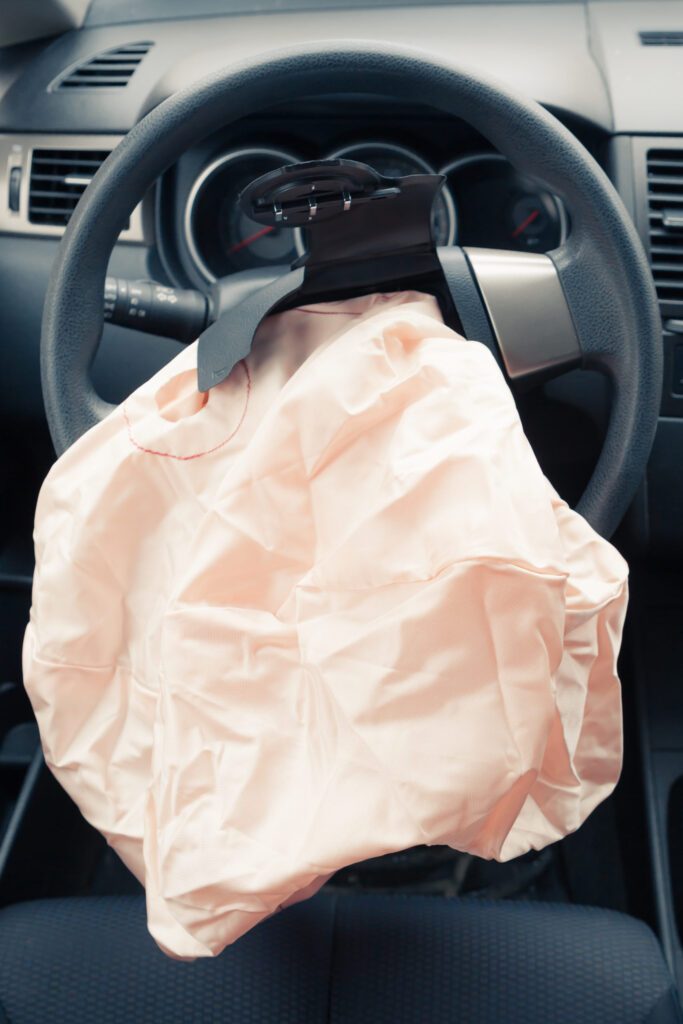
In our next Insurance Institute for Highway Safety testing installment, we take a closer look at frontal crash testing performed at the Vehicle Research Center. Frontal crashes are the most common type of crash that results in serious injury or death. Most of these crashes don’t happen head on where both vehicles are lined up, rather there’s some amount of offset between the vehicles.
The IIHS performs two frontal tests to help evaluate how well a vehicle might protect occupants in these types of frontal crashes. In the moderate overlap frontal crash, a vehicle strikes a barrier at 40 MPH with 40% of the vehicle’s front end width lining up with the barrier. A section of the barrier is made out of aluminum honey comb that crushes like a real car would in a crash. This section is mounted to a larger barrier that is composed of 320,000 pounds of steel and reinforced concrete. The second type of crash is called a small overlap crash. A vehicle is accelerated down a track into a barrier at 40 MPH, with only 25% of the front end of the car lined up with the edge of the barrier. This barrier is rigid and has a radius of about 6 inches. This represents what happens when one vehicle hits another in that small overlap, or when a vehicle hits a tree, poll, or post.
Three criteria are used at the VRC to evaluate frontal crashes. The first is how well the safety cage held up and protected the occupant from intrusion and injuries related to the forces of the crash. The second is measured from the dummy itself on the risk of injury in the crash. The third is how well the restraint system (seatbelts and airbags) work to protect the occupant and keep the occupant away from any injurious impacts.
When assessing vehicle structure performance in frontal crash tests, the IIHS looks at the amount of deformation or intrusion at a series of locations inside the occupant compartment. It’s important for vehicles to minimize this deformation because as those structures come back towards the occupant, it is much more likely to cause injury. The IIHS provides a video showing poor performance. In this example, the wheel was pushed rearward into the lower part of the occupant compartment, causing a lot of intrusion into the foot well. The pillar, instrument panel, and steering wheel were also pushed rearward and inboard. This increases injury risk to the occupant.
Crash test dummies used in these frontal crash tests have sensors in the head, neck, chest, upper leg, lower leg, and foot that all measure risk of injuries. In moderate overlap crashes today, dummy injury measures tend to be low for all body regions. This is because vehicles are designed for this crash mode and restraint systems properly protect occupants from injury. In small overlap crashes, some vehicles do a good job of protecting the occupant inside. In other vehicles, it is more common to see high risk of injury. This is because many vehicle manufacturers have not designed for this crash mode yet.
Like all other tests and performance standards conducted by the IIHS, frontal crash testing is in place to provide safer vehicles to the general public. By providing higher safety scores to deserving vehicle models, the IIHS is holding manufacturers with less safe vehicles accountable in the eyes of consumers. As Marietta auto accident attorneys, Andrew Jones and Chase Swanson witness the results of serious car accidents often. For this reason, Jones & Swanson supports all IIHS testing and urges readers to consider testing scores before purchasing a vehicle.
Categories: Airbag Safety, Auto Accidents, Car Accident, Personal Injury



